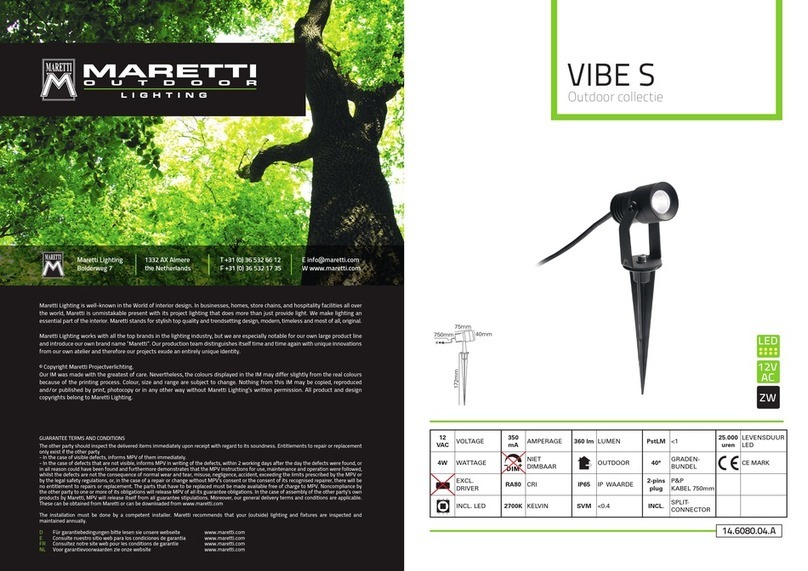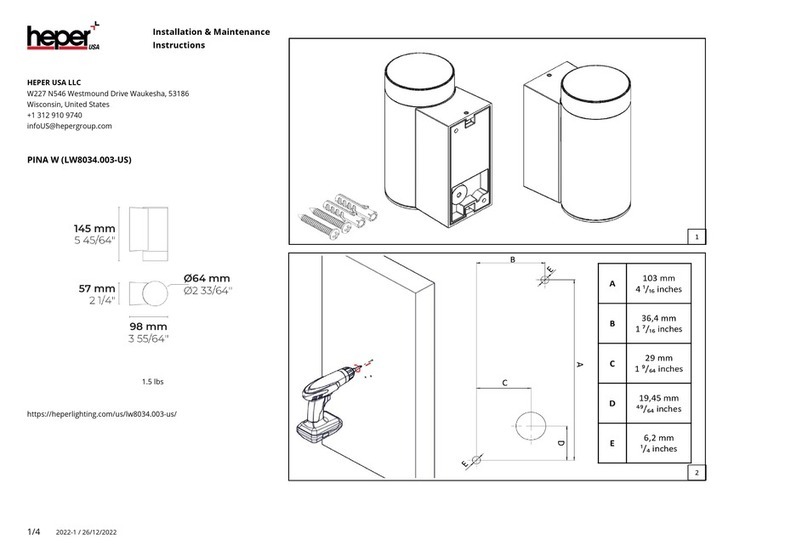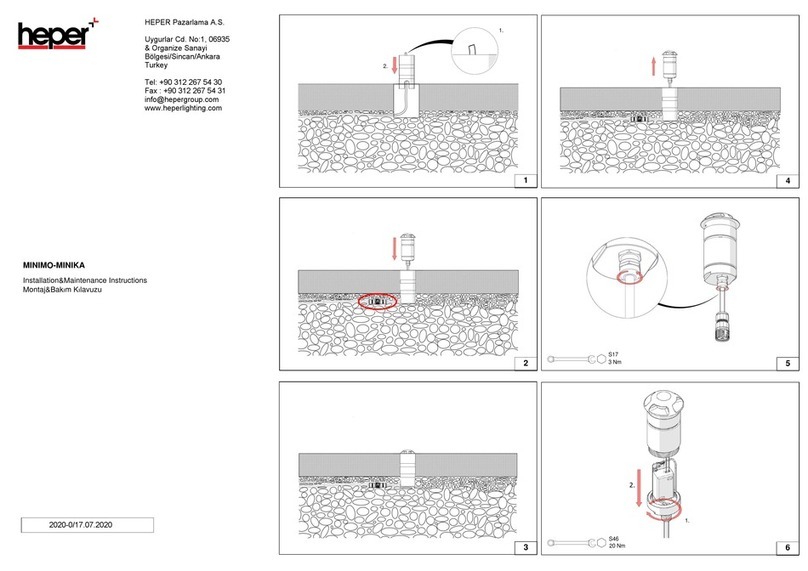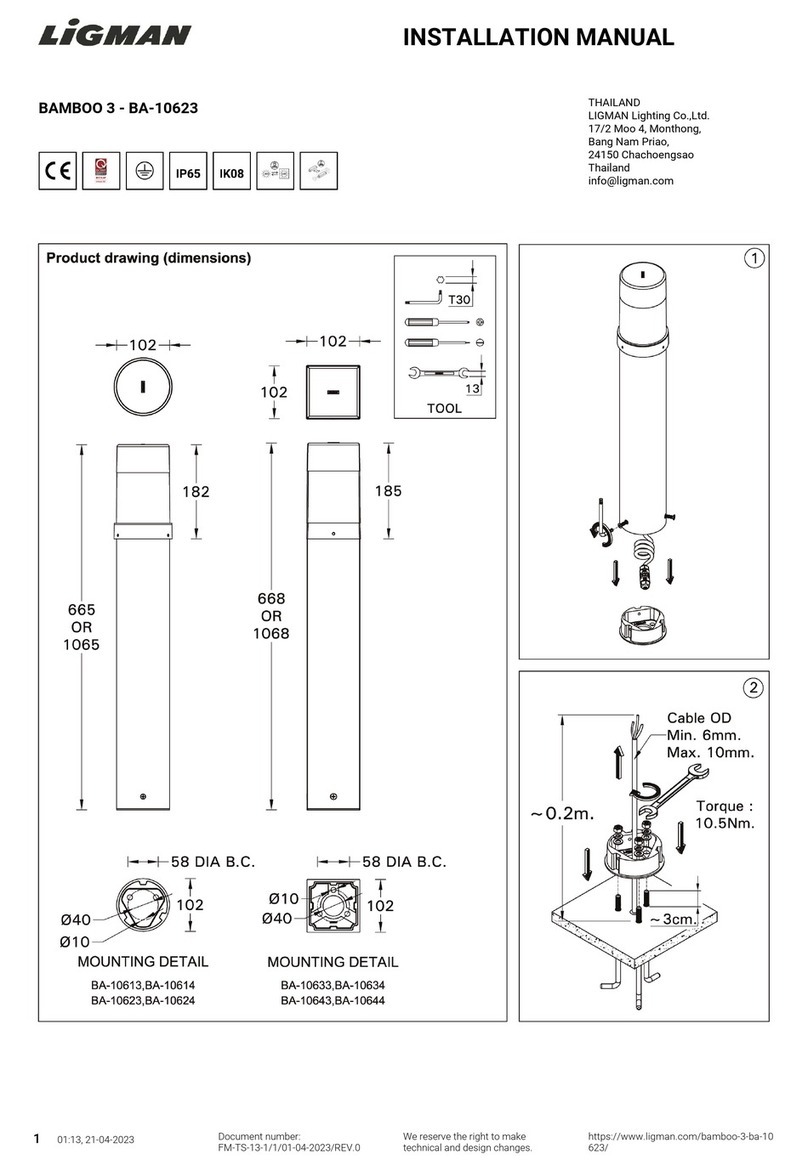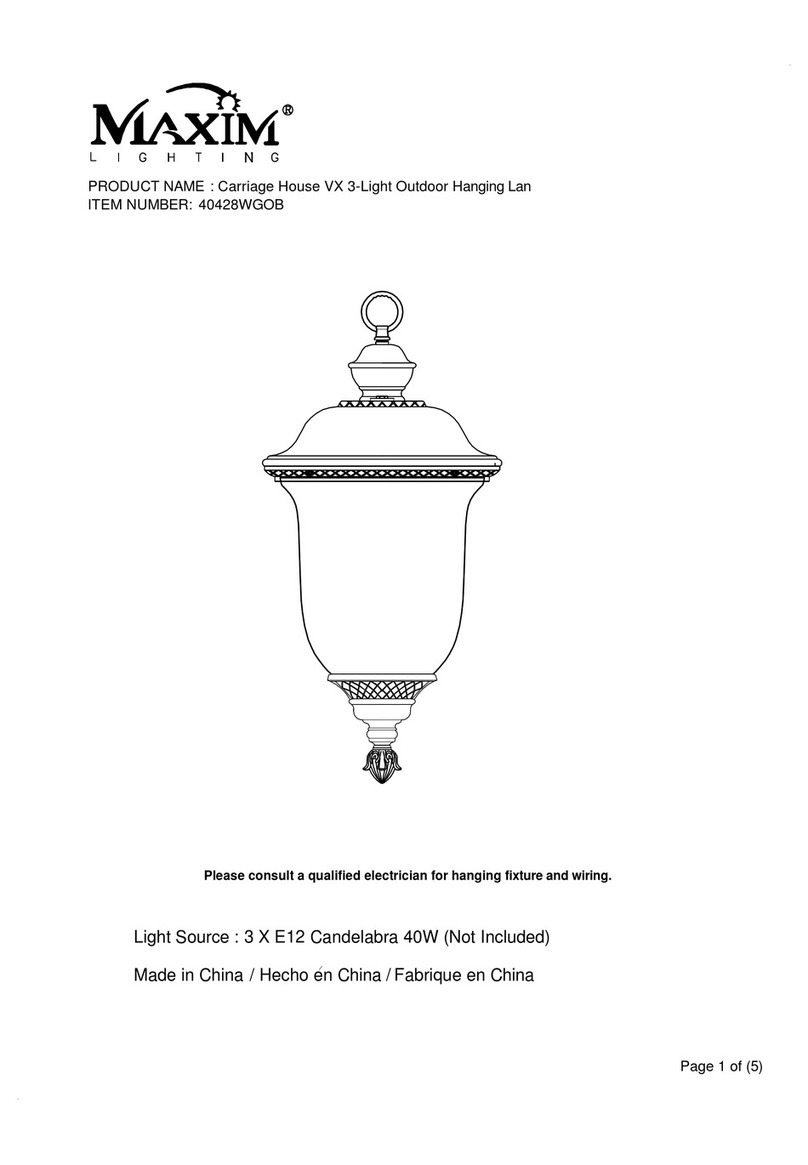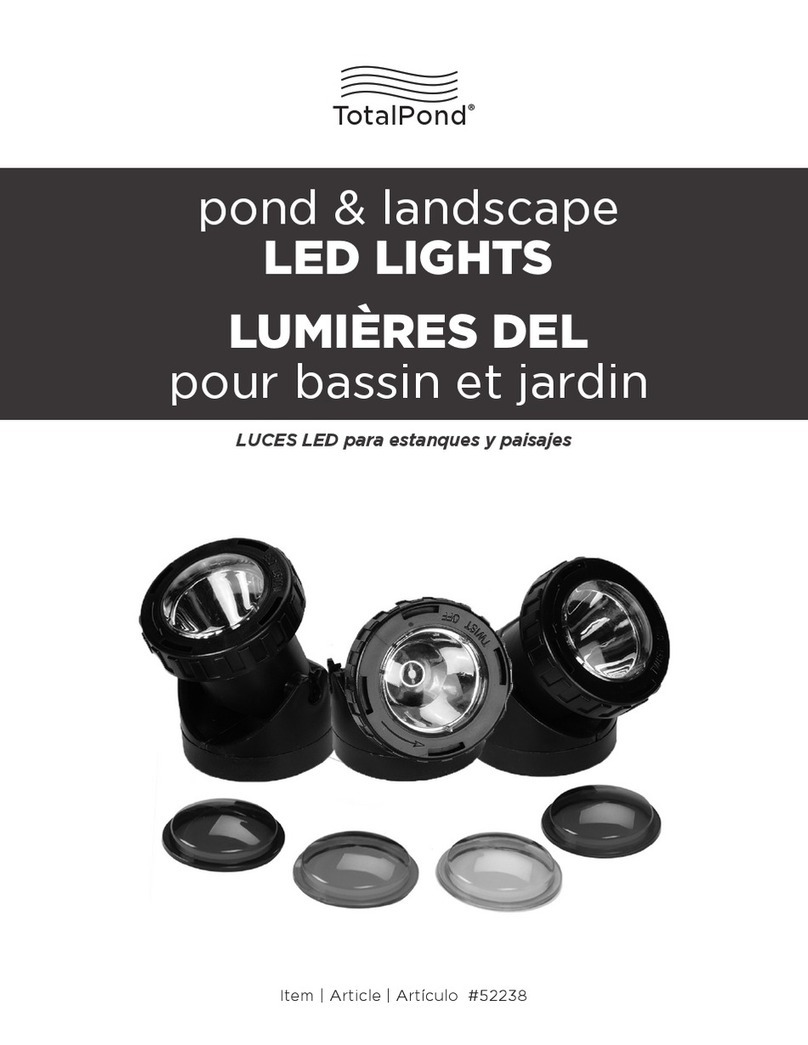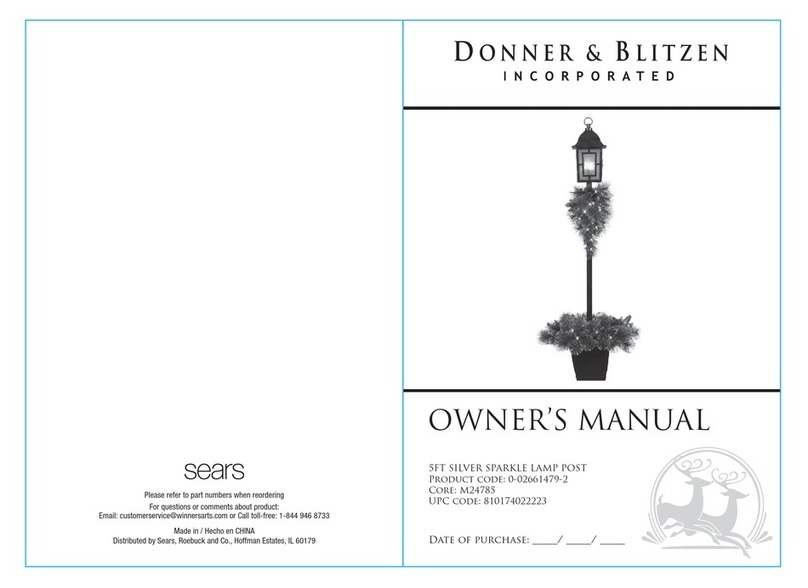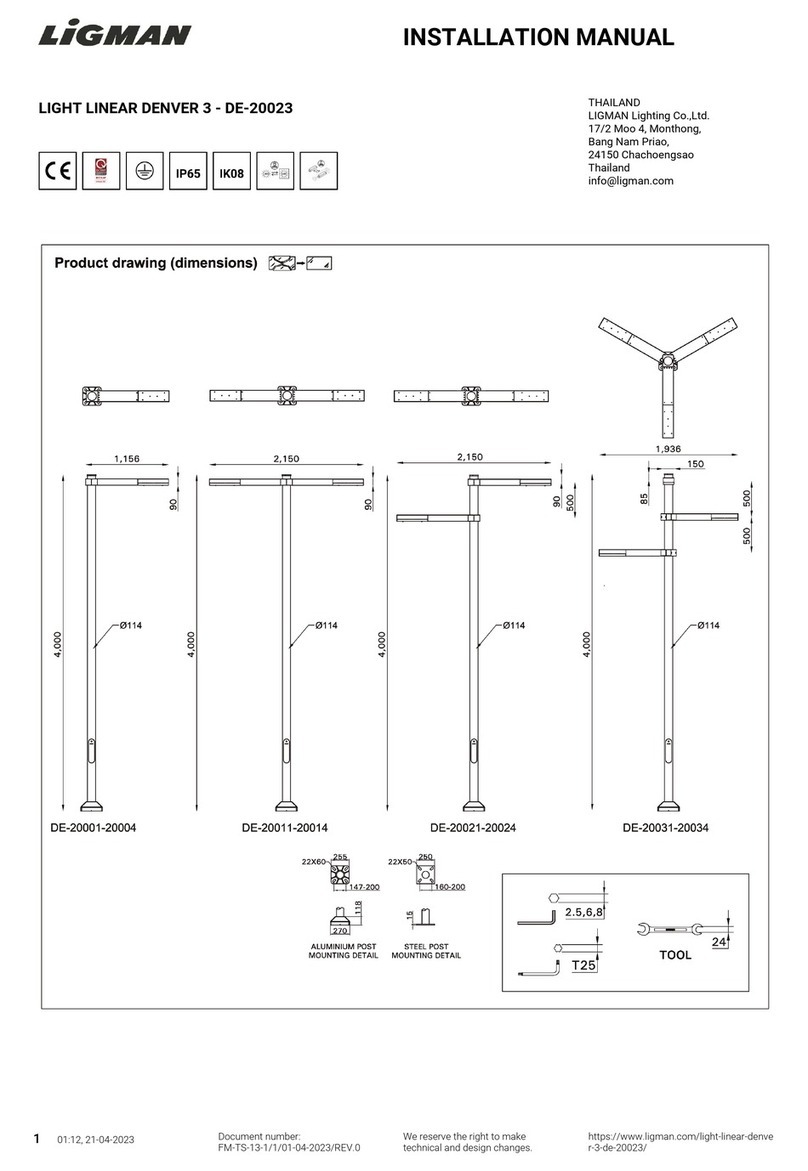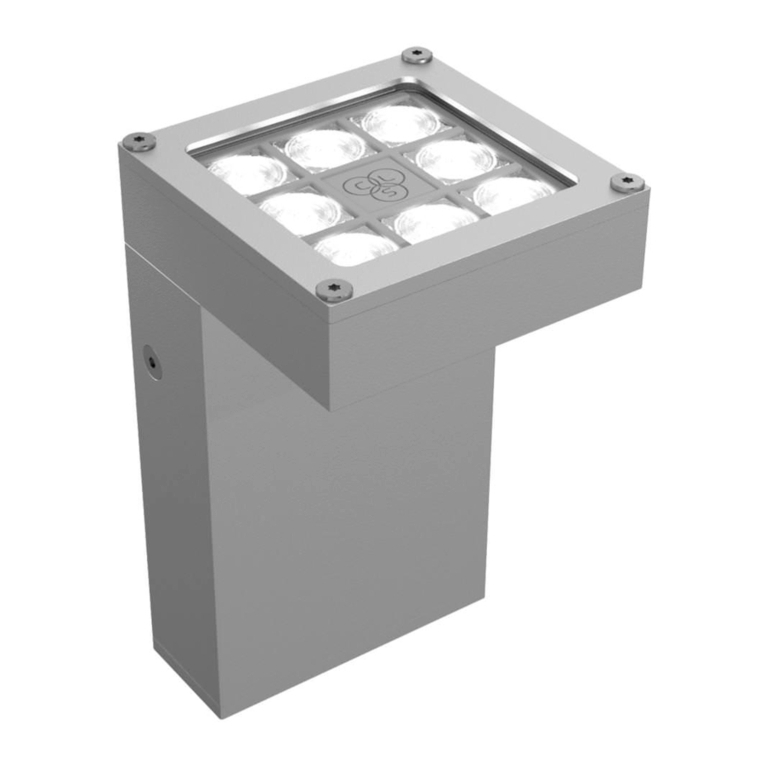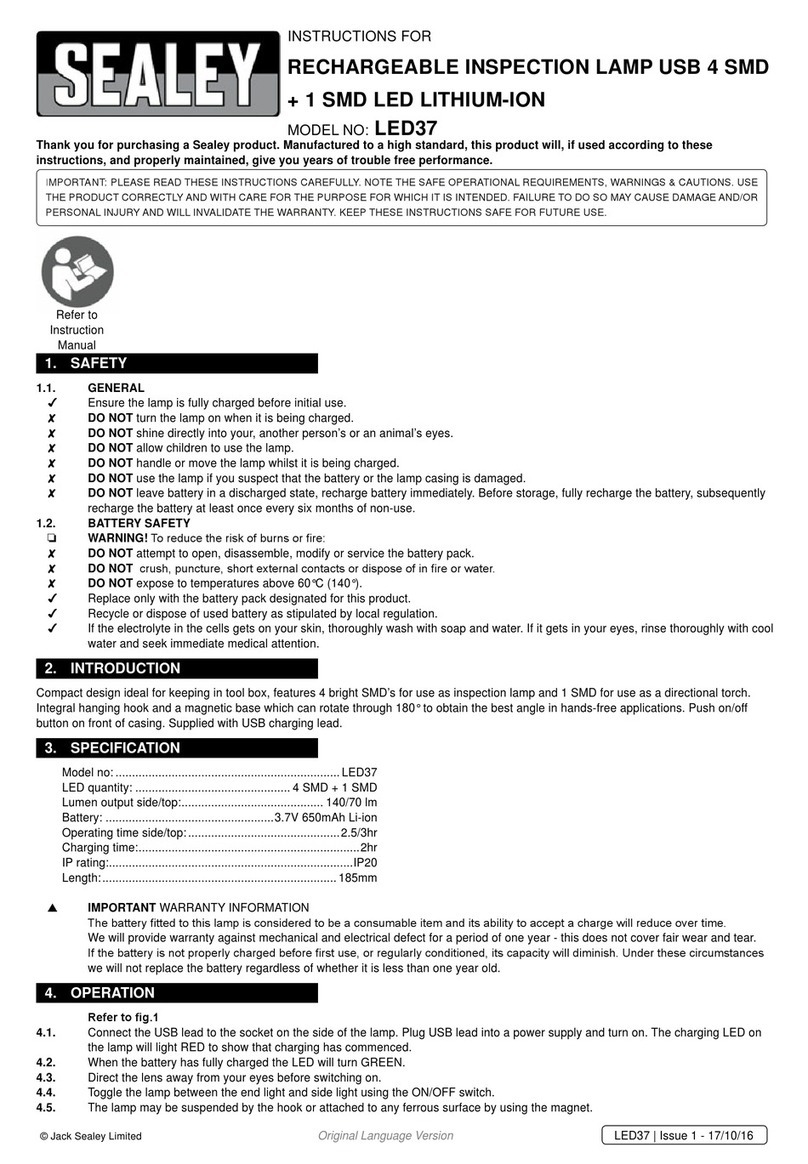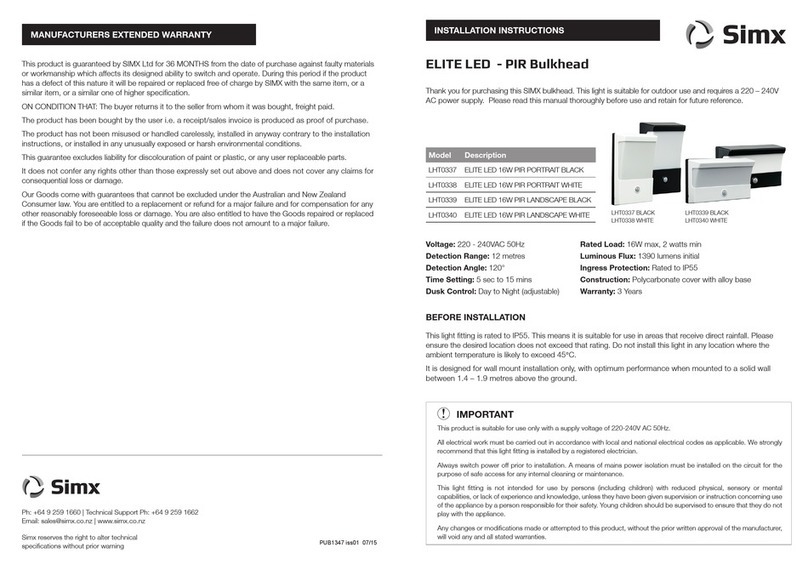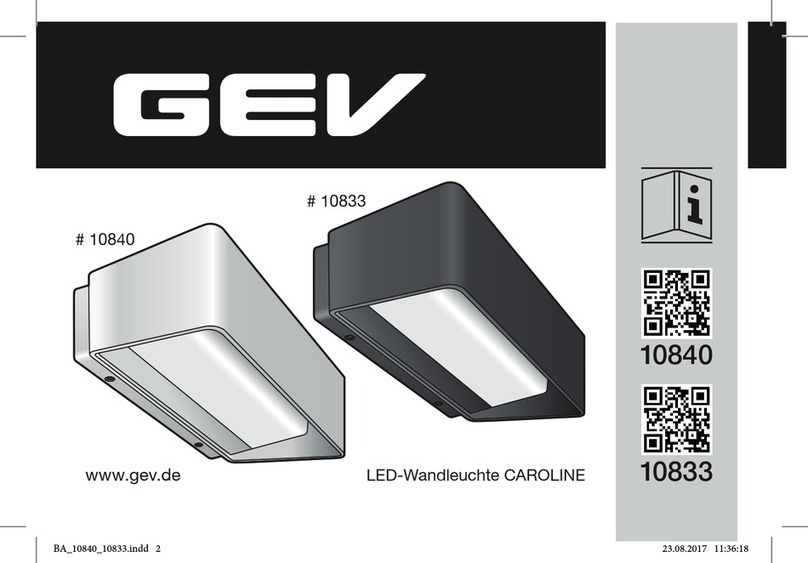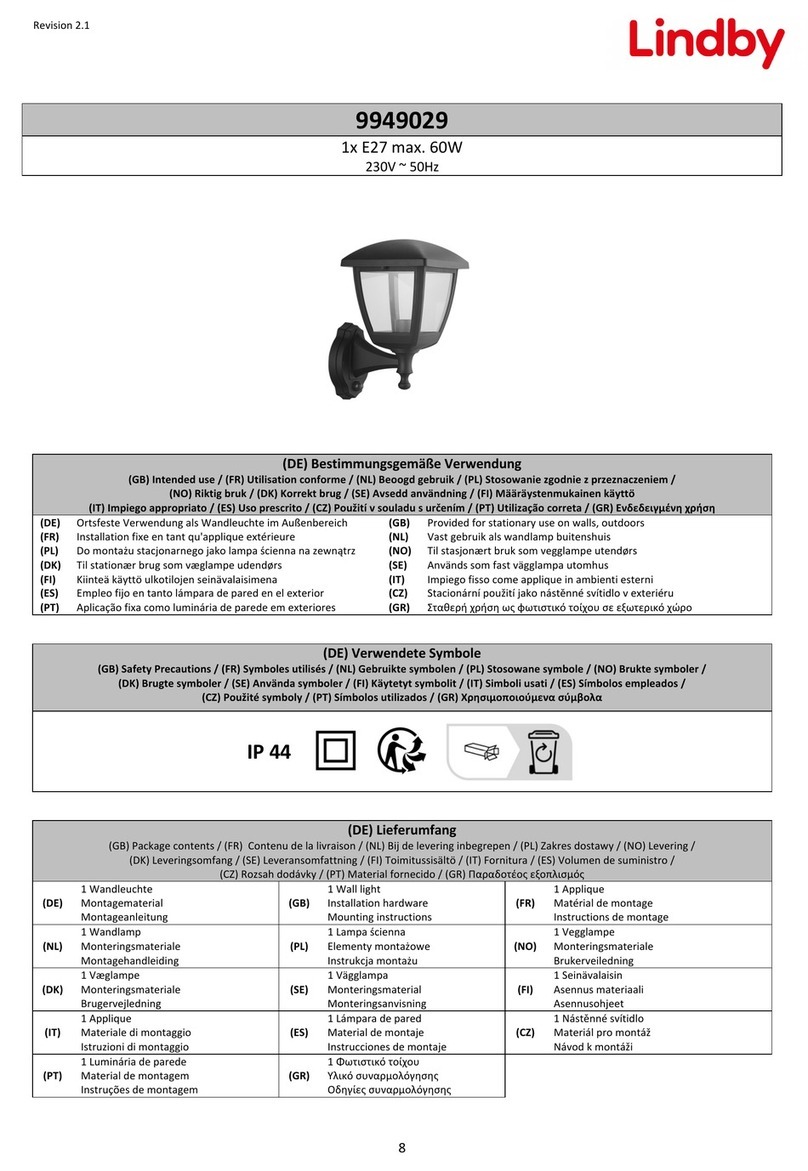
Lamp will not light
The ballast in this luminaire is equiped with integral open-circuit and ground-fault protection. It the luminaire is energized
without a lamp in place, the ballast will turn itself off automatically. To reset the ballast, the primary power must be turned
off, and then on again. If the luminaire still does not light, the lamp could be inoperable. Contact the factory for further
assistance.
Lamps are dim or do not turn on in cold weather
These lamps and fixtures are intended to operate in continuous temperatures of 10 F and above. It is recommended that
in cold climates (10 F to 32 F), the fixures be left on continuously (day and night), as lamp starting can be problematic
during after temperature dips into the single-digits (and below). Leaving lamps burning continuously during cold weather
will alleviate potential starting issues caused by cycling lamps on in the eveining and off in the daytime.
Lamps will also not exhibit full intensity at temperatures below 32 F, and may appear very dim at temperatures below 10 F.
Lamp exhibits a rolling or spiraling effect
Turn the luminaire off for five seconds, and then turn off for two seconds. Repeat this procedure 5-10 times. The rolling or
spiraling should stop. If the lamp continues to roll or spiral, remove the lamp from the luminaire, wipe it with a clean rag,
and reinsert the lamp 180 degrees from its previous orientation. If the lamp continues to appear unstable, contact the
factory for further assistance.
Condensation appears inside luminaire
Polycarbonate lens is not seated correctly, and/or lens retaining clips are not seated fully into channel which contains the
lens lip and the silicone gasket, or EPDM Rubber washer between luminaires is not compressed properly.
System Checklist & Troubleshooting Page 7
SYSTEM CHECKLIST (PRIOR TO ENERGIZING)
The circuit may be energized after the following items have been completed:
A. Luminaires are properly fastened and lamps are properly installed and seated within the lampholders
B. Lens is installed and is properly compressing the silicone gasket
C. All primary connections have been made with the proper electrical connectors
8020 Queenair Drive
Gaithersburg, MD 20879
Ph: (800) 551-5012
Fax: (301) 963-3050
ECLS Manual 6-08
c2008 Cathode Lighting Systems
TROUBLESHOOTING

